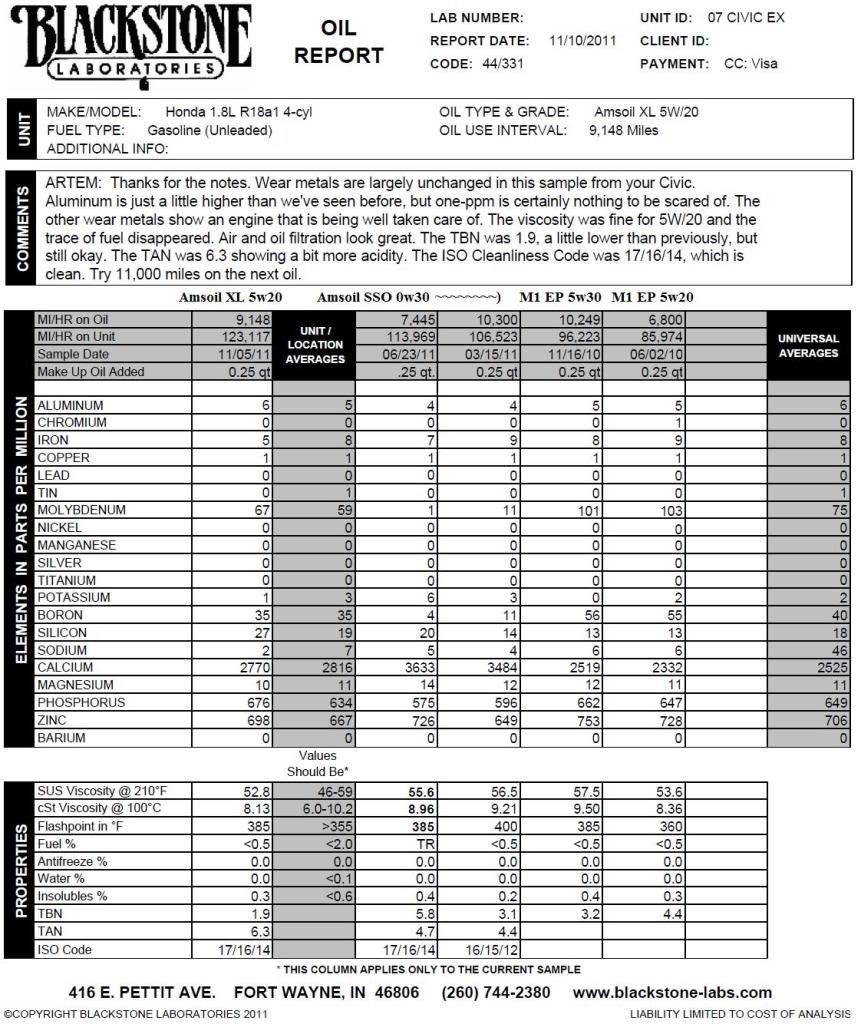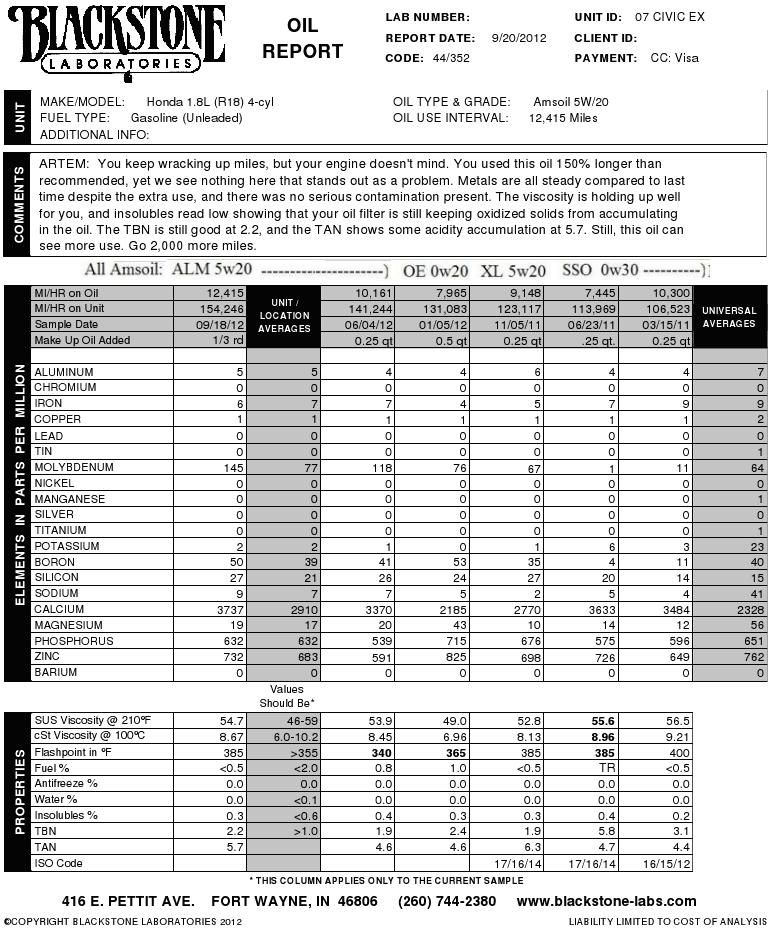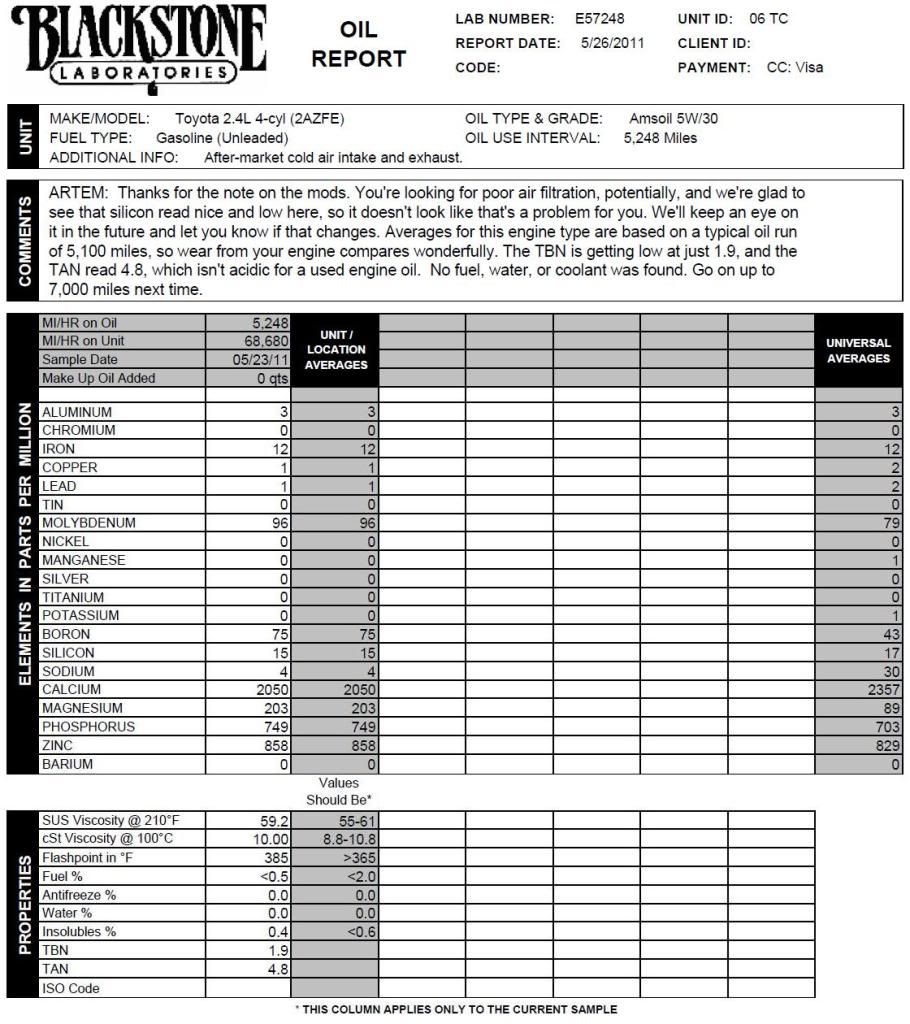Originally Posted By: timeau
Originally Posted By: rhhsiao
I never said that there is an issue with correlation between TBN and TAN. In fact, I fully support looking at the relationship between TAN and TBN.
Seems I lost my ability to read or you don't remember what did you say a day ago:
Originally Posted By: rhhsiao
So what if TAN is almost 2X TBN?
Did I miss anything?
Originally Posted By: rhhsiao
But your entire argument and condemnation about this UOA from Blackstone that said the TBN issue was fine is because a different lab flags TBNsdiv>
You read somebody's else writing. Or don't get the point. These are my words:
Originally Posted By: timeau
"TAN almost twice higher than TBN. You definitely overrun the oil."
Isn't it clear that I meant the correlation of TBN and TAN
only?
Originally Posted By: rhhsiao
What is it about this Russian lab that makes their analysis more trustworthy than Blackstone? The example you just posted doesn't even have a TAN measurement.
You missed it again. I gave the first link on another UOA:
My first link where is told that TBN is less than TAN
Originally Posted By: rhhsiao
You seem bent on the idea that because Blackstone said his report looks great, but a Russian lab has a different general conclusion about TBN that suddenly Blackstone is just wrong and "sometimes uses janitors for writing their reports".
Blackstone did not mention about the correlation of TBN and TAN. And this was the only thing that makes me unhappy. They must know about this if they dare to advise to regular users. If they provide just numbers, this would be fear. Otherwise they take at least moral responsibility for their words. That's why I compared their writers with janitors: same technical level, IMO.
Originally Posted By: rhhsiao
You're making direct comparisons of oil analysis when the two have different types of assumptions of how to interpret the data.
You have some relation to politicians, right? Just them can change their opinions to opposite twice a day. Where did I compare two UOA? I gave you links on two UOAs for:
1. To demonstrate that the situation when TAN>TBN is abnormal (oil is overrun), from link 1.
2. Wear numbers are almost meaningless: other conditions are much more important (picture 2).
Please, do NOT assign me what I did not say.
Clearly we're kind of passing each other in the night here.
Your comment was that a TAN of 2X TBN means Artem overran his oil. I then asked the question of so what if TAN is 2X TBN? My question was meant to advance the discussion of why you think a TAN almost 2X TBN means he overran his oil? At no point did I say I have a problem with looking at the correlation but if you're going to make the point that a TAN almost 2X TBN means too long of an OCI, I wanted to know why that's the case? Why is TAN approaching 2X TBN or higher, the condemnation point for you? You then posted a UOA from a different lab on a different oil that shows the 2X issue BUT only really flags the TBN for being under a certain value which in my interpretation looks to be when it drops below 2.0, unless I'm missing something in the Russian writing. You also posted another example from the same lab that doesn't even have a TAN measurement. The interpretation I'm getting from the Russian UOAs is that they don't like TBN when it drops below a certain value because in neither instance have they flagged the TAN as well. In both instances they flagged it when they were below 2.0 while one of the UOAs also had an issue with viscosity. I don't necessarily feel the Russian methodology is wrong, but what is it about how they interpret data that invalidates Blackstone? Blackstone did indeed look at TAN. They mentioned it in their report that it was actually lower than before. As a result, to a certain extent, they took into account the TAN issue although it sounds like not to your liking.
My point is this. You're trying to use one set of assumptions and conclusions to completely invalidate the report of a different lab with a different set of assumptions. If you had said, this Russian lab which flags UOAs with TBN below a certain value and TAN above a certain value, you might want to consider shortening your oil run, I would have had ZERO issues. But your emphatic statement of TAN almost being 2X TBN is a bad idea seems way too far in the direction of only catering to what you personally feel comfortable with. It's fine if you feel that way. My problem is when people mistake their personal opinions for universal truth.







